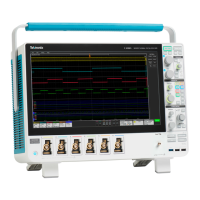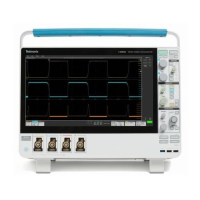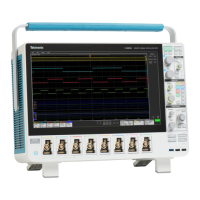Minimum measurement algorithm
Minimum is the minimum data point. Typically the most negative peak voltage.
Negative Overshoot measurement algorithm
Negative Overshoot is the difference between Minimum and Base, divided by the amplitude. It is the percent that the waveform
goes below base.
Note that overshoot values should never be negative (unless Top or Base are set out-of-range).
Positive Overshoot measurement algorithm
Positive Overshoot is the difference between Maximum and Top, divided by the amplitude. It is the percent that the waveform
goes above top.
Note that this value should never be negative.
Peak-To-Peak measurement algorithm
Peak to peak is the difference between Maximum and Minimum.
PeaktoPeak = Max – Min
RMS measurement algorithm
RMS is the true root mean square of the data points.
RMS =
(data1
2
+ data2
2
. . .)
(end - start)
Top measurement algorithm
Top is calculated using the selected Base Top method. Top is the most common data value above the midpoint of the waveform,
when the default Base Top method Histogram Mode is selected. This measurement can be made across the entire record or on
each cycle in the record.
Measurement algorithms
MSO54, MSO56, MSO58, MSO58LP, MSO64 Help 447

